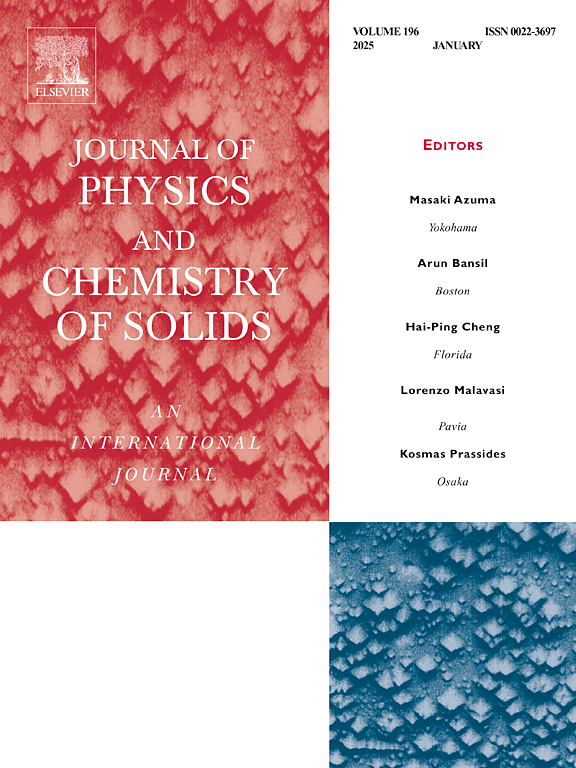Solvent-free mechanochemical synthesis of photocatalytically active nanocomposite based on binary and ternary sulfides of zinc and indium
IF 4.3
3区 材料科学
Q2 CHEMISTRY, MULTIDISCIPLINARY
引用次数: 0
Abstract
A novel rapid solvent-free approach for the preparation of a nanocomposite containing the solid solution of zinc indium sulfide (ZIS), binary indium sulfide and a small amount of zinc sulfide is reported herein. In just 15 min of processing the elemental mixture of zinc, indium and sulfur in a planetary ball mill, a considerable amount of nanocrystalline ZIS, with an admixture of binary intermediates was obtained via mechanochemical synthesis (ZIS-15). The detailed investigation of lattice parameters via Rietveld refinement of the XRD data has shown the continuous shrinkage of unit cell upon incorporation of zinc into the lattice of indium sulfide, thus pointing to the formation of a solid solution. When milling was prolonged for a further 15 min (ZIS-30), the color changed from brown to orange and the amount of ZIS further increased, albeit it was not possible to completely transform binary intermediates into ZIS. The zeta potential values were documented to be −21.6 and −11.5 mV for ZIS-15 and ZIS-30, respectively, documenting different surface properties. The difference is most probably caused by the higher content of binary indium sulfide in ZIS-15. The obvious difference was evidenced also in the photocatalytic activity to decompose rhodamine B dye, which was 2.5 times higher in the case of ZIS-15, thus the presence of higher number of binary sulfides seems to be beneficial. ZIS-15 was capable of degrading also non-colored diclofenac sodium. Thus, the actual inability to achieve a complete conversion to ZIS in 30 min is used as a benefit to obtain a photocatalyst with better activity here. The proposed study also highlights a great suitability of solvent-free mechanochemical synthesis for the sustainable production of nanocrystalline semiconductor photocatalysts, as the calculated E-factor of 22.9 is much lower than when using traditional hydrothermal synthesis. This also accounts for the atom economy, as we are using only the reactants forming the product, whereas the classical chemistry uses salts.

求助全文
约1分钟内获得全文
求助全文
来源期刊
CiteScore
7.80
自引率
2.50%
发文量
605
审稿时长
40 days
期刊介绍:
The Journal of Physics and Chemistry of Solids is a well-established international medium for publication of archival research in condensed matter and materials sciences. Areas of interest broadly include experimental and theoretical research on electronic, magnetic, spectroscopic and structural properties as well as the statistical mechanics and thermodynamics of materials. The focus is on gaining physical and chemical insight into the properties and potential applications of condensed matter systems.
Within the broad scope of the journal, beyond regular contributions, the editors have identified submissions in the following areas of physics and chemistry of solids to be of special current interest to the journal:
Low-dimensional systems
Exotic states of quantum electron matter including topological phases
Energy conversion and storage
Interfaces, nanoparticles and catalysts.

 求助内容:
求助内容: 应助结果提醒方式:
应助结果提醒方式:


